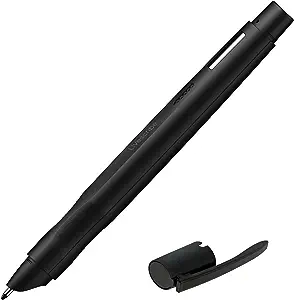U.S. National Ballpoint Pen Day is celebrated every year on June 10th, so this fun observance is “write” around the corner!
As an author and former salesperson in the office products arena, a good pen makes me positively giddy.
Before the introduction of pens as we know them today, quill pens or fountain pens were widely used in the 1800s and historians have records of pen-like instruments being used as far back as 950 AD.

The first commercially successful ballpoint pen was introduced in 1945 and was known as the Bíro. Manufactured by the Reynolds International Pen Company.
The Reynolds International Pen Company, led by Milton Reynolds, acquired the rights to produce and distribute the Bíro pen in the US. In 1950, Marcel Bich launched his own ballpoint pen in France under the BIC® brand, a shortened and more memorable version of his own name. For many years his pen line was know as the BIC Biro line and was a very basic ink pen with a cap.

Fun Fact: One of the many things I learned from my thirty year stint in office products sale was why modern pen caps have a hole in the end. In 1991, companies, including BIC, began designing each ballpoint pen cap with a tiny hole at the top, leaving many to wonder what it meant and the purpose it could possibly serve. The reason is simple: it was to reduce the risk of choking. If a child were to swallow a pen cap, the hole at the end would provide some airflow and save a life until help arrived.
In 1963, a new writing instrument was born and was touted as the “smoothest” pen on the market. The rollerball pen, invented by Nakata Touzaburo for the Japanese company OHTO was an innovative pen that combined the smooth ink flow of a fountain pen with the convenience and reliability of a ballpoint pen, offering users the best of both worlds.
In 1979, Papermate launched a groundbreaking product that changed the landscape of writing instruments: erasable pens. The Erasermate series of pens was another innovative pen that introduced consumers to the reality of erasable ink, allowing users to write and rewrite as needed without the permanence of traditional ink pens.
In 1982, the Japanese pen maker Sakura showcased the invention of gel pens. These vibrant writing instruments offered users a new experience by combining the smoothness of ballpoint pens with gel ink’s bold, vivid colors. Gel ink is unique in several ways, but the main difference is a unique ink formulation of water, pigment, and a gel-based thickener. This ink allowed the pens to produce richer, more intense colors and enabled them to write on various surfaces, including dark and glossy materials.
As you can imagine, the success of the commercially made pens spawned hundreds, if not thousands, of different types of writing instruments. The last decade has brought us knew concepts in writing instruments including pens made from recycled materials, antimicrobial pens (germs with not multiple on this surface), digital styluses, Smartpens, and augmented reality pens.

My Favorite Pens on The Planet
Not to brag, but my past life as a seller of office products allowed me to test and use hundreds of different kinds of pen. And as any good Pen Nerd will tell you, once you find a pen or two that you love, you remain loyal to the pen/brand for a long time.
Currently, one of my favs is the Zebra F301 Retractable Ballpoint Pen. This beauty has a slim and lightweight design, smooth flowing ink, and it’s refillable!


The G2 writes smoothly, as a comfortable rubber grip, and has been proven to write longer vs. the average of branded competitors. I like this pen because the ink dispenses smoothly and has a great “glide factor.” We’ve all written with pens that feel like its catching and dragging across paper.
Even today, pens are continually adapting to the changing world. Writing with a good quality pen encourages creativity, style, comfort, and they facilitate communications and creativity for generations to come. What kind of pen do you prefer?
